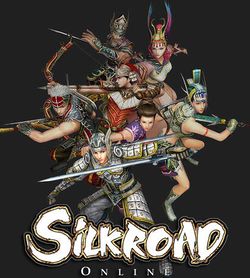
| Silkroad Online | |
|---|---|
| Developer(s) | Joymax |
| Publisher(s) | Joymax |
| Year released | 2005 |
| System(s) | Windows |
| Genre(s) | RPG |
|---|---|
| Players | MMOG |
| Modes | MMOG |
| Latest version |
Silkroad Online (also known as SRO or Silk) is a free massively-multiplayer online role-playing game (MMORPG) created by the South Korean company Joymax, and was released from open beta testing on February 21, 2006. Much of the background of the game is based on the Silk Road, a historical network of trade routes in Southern Asia. The game attempts to reproduce the Silk Road in a much smaller scale, looking realistic and at the same time incorporating fantasy elements such as the use of special magical skills and abilities. One of the game's most noted features is allowing players to choose three different job roles after their character achieves level 20.
Table of Contents
Overview
While the current version of International Silkroad Online is limited to the Chinese race, the Korean version of Silkroad Online has released both Chinese and European races, classes, and world map. Different races will also have access to different character abilities, such as the Islamic lamp elves, however, the power of the Greek gods will not be available to the Europeans.
Gameplay
After registering a login name and password on the game Website, the player logins to the game through the client, then creates a new character. To set up the new character, the player selects a username, or in-game name, a "figure," or a character with a small backstory, and their character's height and volume, which will not be relevant to gameplay and will alter only their character's appearance. Then, two other fields are chosen (which do alter gameplay): the starting clothing type (armor, protector, or garment), and starting weapon (sword, blade, spear, glaive or bow). However, both aspects can be changed during gameplay.
